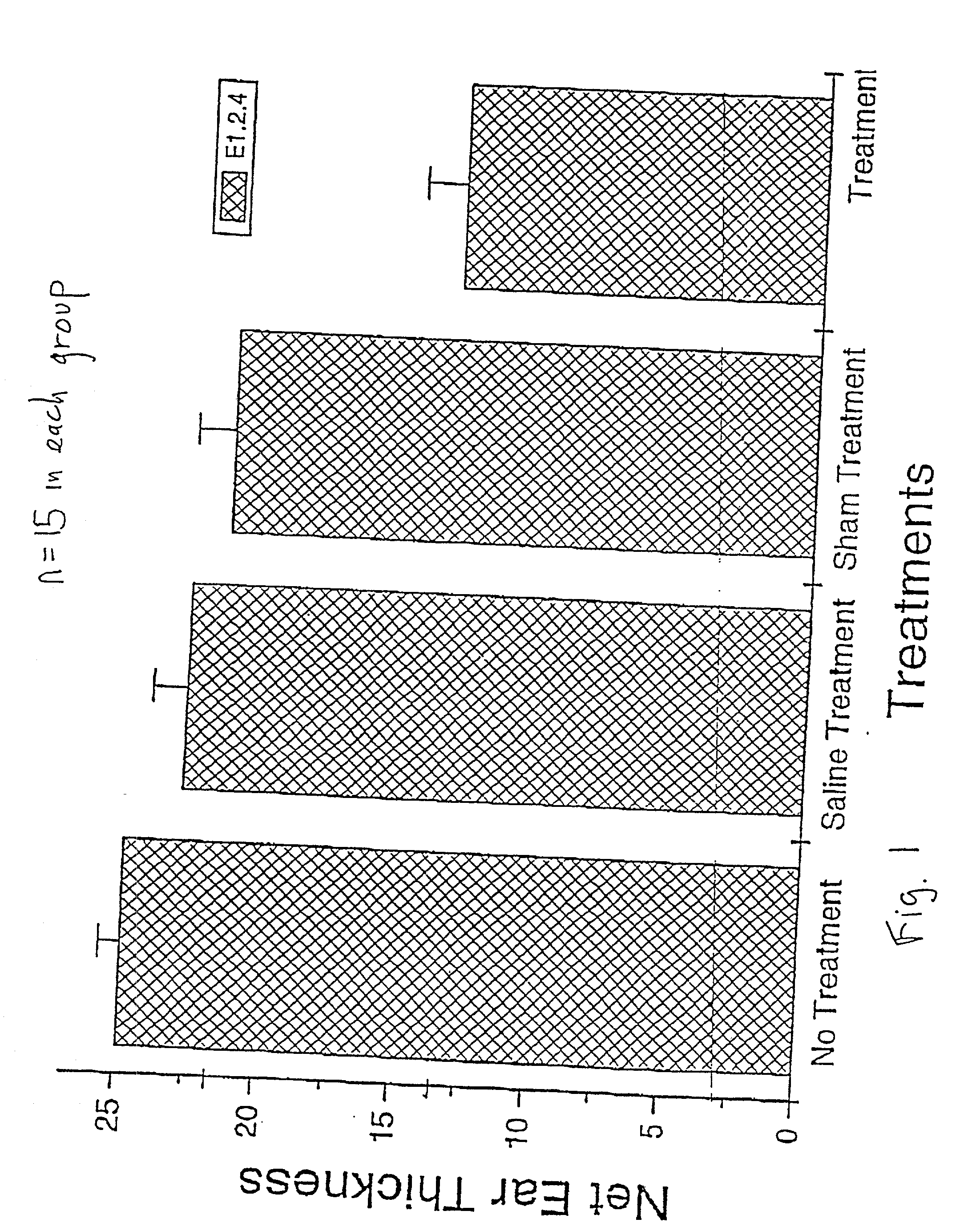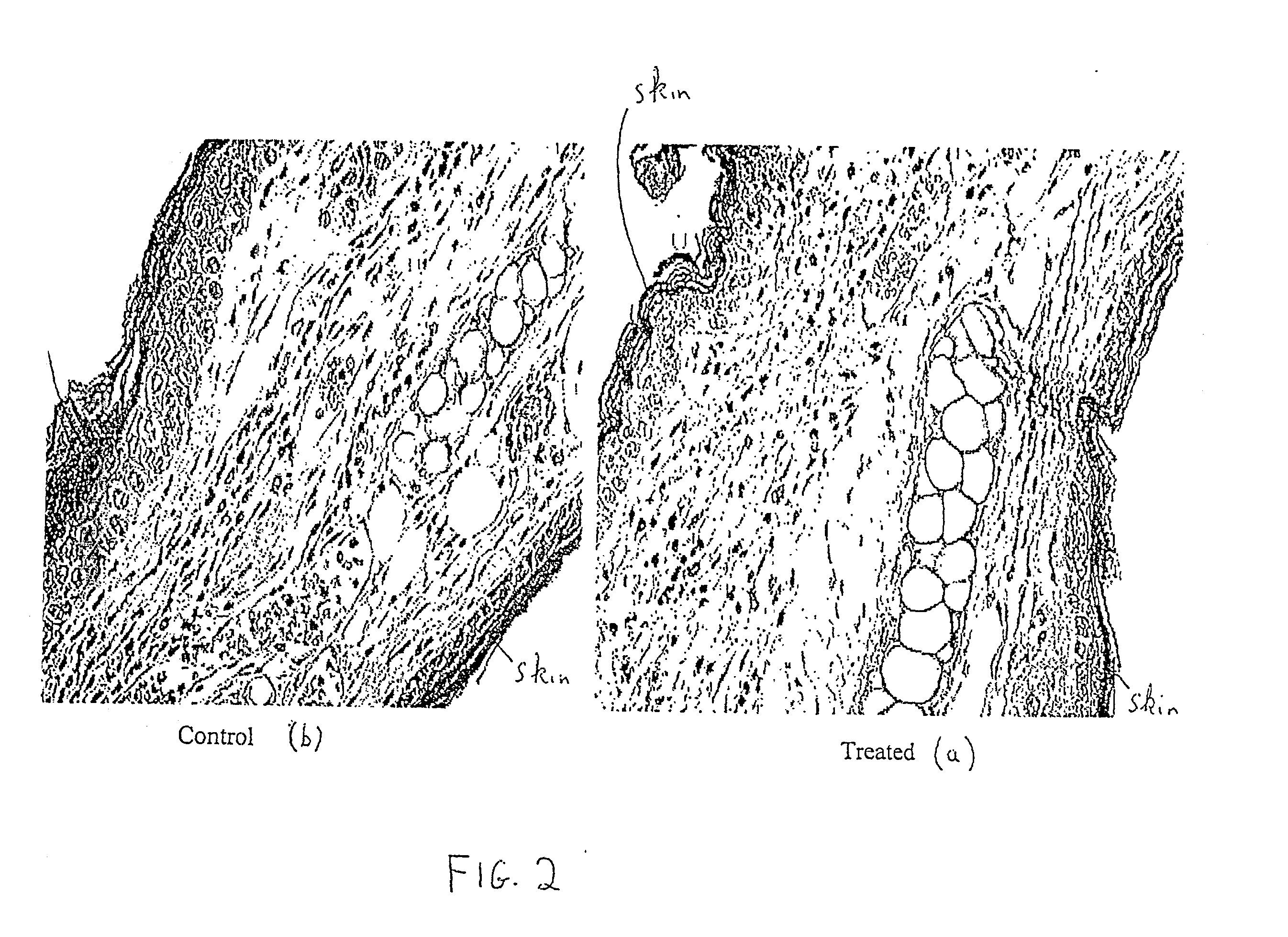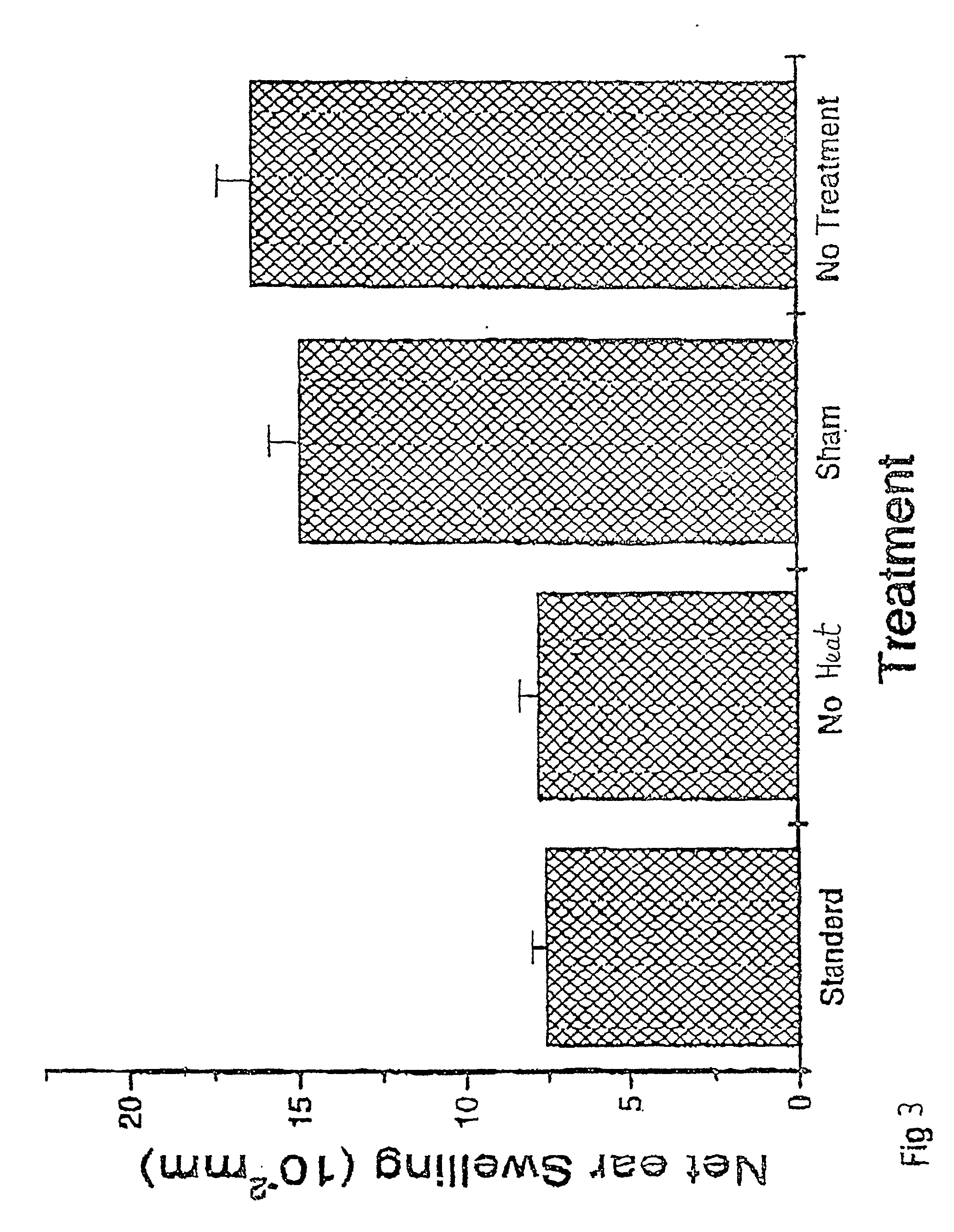Treatment of Il-10 deficiencies
a technology of il-10 and deficiencies, applied in the field of treatment of il-10 deficiencies, can solve the problems of inability to achieve significant clinical benefits,
- Summary
- Abstract
- Description
- Claims
- Application Information
AI Technical Summary
Problems solved by technology
Method used
Image
Examples
example 2
[0057] The procedure of Example 1 was followed, using four groups of Balb / c mice, with one group receiving a blood aliquot which had been subjected to UV and ozone / oxygen bubbling, as described, but without application of the heat stressor (i.e. treated at room temperature). Thus, group A-2 received no treatment, group B-2 received untreated blood (sham treatment), group C-2 received blood treated with UV and ozone but no heat, and group D-2 received blood treated the same way as in the case of group D-1 of Example 1.
[0058] The results are presented graphically on FIG. 3, in the same manner as
[0059] FIG. 1. The result from group D-2 is marginally better than that from group C-2. The percentage suppression when compared to the standard CHS response (no treatment, group A-2) is 9% for group B-2, sham treatment, 52.5% for group C-2 and 54% for group D-2.
example 3
[0060] Whole blood was obtained from Balb / c mice. Part of the blood was subjected to UV, ozone and heat treatment as described in Example 1, and part of the blood remained untreated. Both the untreated blood and the treated blood were centrifuged to obtain a cellular fraction, and washed with saline. The treated and untreated fractions were administered to animals challenged with DNFB to develop contact hypersensitivity as described in Example 1.
[0061] Four groups of 5 mice each were injected according to the schedule of Example 1, and evaluated, as follows: Group A-3--no-treatment; Group B-3--cellular fraction of sham treated blood; Group C-3--cellular part of treated blood; Group D-3--whole treated blood. The administrations to the mice took place just prior to sensitization with 0.5% DNFB and continued every day until challenge with 0.2% DNFB, 5 days later. A total of 6 injections were administered to each mouse.
[0062] The ear swelling of each mouse was measured 24 hours after ch...
example 4
[0064] To demonstrate the fundamental role of IL-10 secretion in the processes described above, the procedure of Example 1 was essential repeated, using a genetic strain of laboratory mice deficient in the gene responsible for IL-10 production and secretion, i.e. IL-10 knock-out mice. These are available from laboratory animal sources, for approval experimental purposes.
[0065] Four groups each comprising five IL-10 knock-out mice were sensitized with DNFB, as described in Example 1. Whole blood was obtained from the IL-10 knock-out mice, by extraction from a main artery through an injection needle, and treated with an anti-coagulant. Aliquots of this blood were treated as described in Example 1, and other aliquots left-untreated for use as controls.
[0066] Control group A-4 received no injection. The animals of Control group B-4 were treated with physiological saline. The animals of control Group C-4 were then treated with 50 .mu.l of blood which had been extracted but not treated wi...
PUM
 Login to View More
Login to View More Abstract
Description
Claims
Application Information
 Login to View More
Login to View More - R&D
- Intellectual Property
- Life Sciences
- Materials
- Tech Scout
- Unparalleled Data Quality
- Higher Quality Content
- 60% Fewer Hallucinations
Browse by: Latest US Patents, China's latest patents, Technical Efficacy Thesaurus, Application Domain, Technology Topic, Popular Technical Reports.
© 2025 PatSnap. All rights reserved.Legal|Privacy policy|Modern Slavery Act Transparency Statement|Sitemap|About US| Contact US: help@patsnap.com



